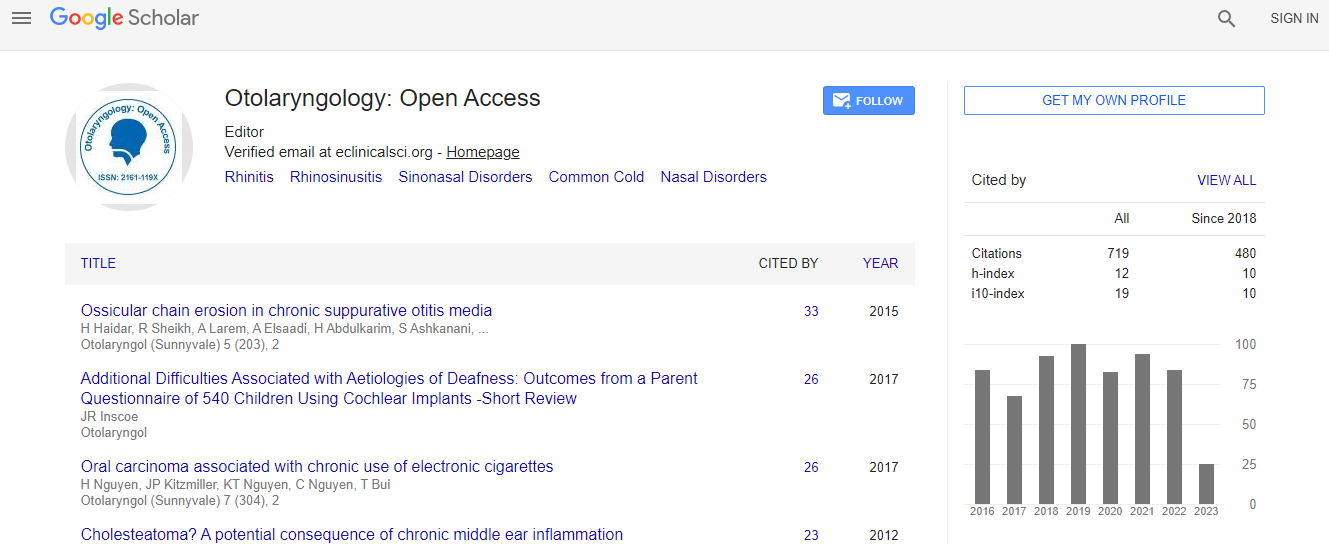Comparison of Different Diffusion Weighted MR Techniques in the Diagnosis of the Middle Ear CholesteatomaâValue of Non-Echo Planar Diffusion-Weighted MRI
*Corresponding Author: , Department of General, Interventional Radiology and Neuroradiology, Wrocław University HospitalReceived Date: Jun 17, 2019 / Accepted Date: Jul 05, 2019 / Published Date: Jul 12, 2019
Citation: Piekarek AK, Zatoński T, Sąsiadek M, Zimny A (2019) Comparison of Different Diffusion Weighted MR Techniques in the Diagnosis of the Middle Ear Cholesteatoma–Value of Non-Echo Planar Diffusion-Weighted MRI. Otolaryngol (Sunnyvale) 9: 374.
Copyright: © 2019 Piekarek AK, et al. This is an open-access article distributed under the terms of the Creative Commons Attribution License, which permits unrestricted use, distribution, and reproduction in any medium, provided the original author and source are credited.
Abstract
Objective: Magnetic resonance (MR) imaging is essential to detect middle ear cholesteatoma, especially using Diffusion weighted imaging (DWI). The aim of the study was to analyse the value of two different DWI techniques (Echoplanar imaging (EPI) and non-EPI) in the diagnosis of cholesteatoma.
Methods: Our material consisted of 32 patients with a clinical suspicion of cholesteatoma who underwent Magnetic resonance imaging (MRI) of the temporal bone using both EPI and non-EPI DWI. Only studies with histopathological results were included. Two independent readers retrospectively analysed MR images. Intra-and interobserver agreements as well sensitivity, specificity, negative (NPV) and positive (PPV) predictive values of two DWI sequences were assessed.
Results: Using non-EPI DWI all cholesteatomas were correctly diagnosed by both readers with no false negative nor inconclusive cases and with only one false positive result. Non-EPI DWI revealed high interobserver agreement (ĸ=1) and high correlation with histopathological results (r=0.895). EPI DWI misdiagnosed 27-31% of cholesteatomas (false negative results), showing also significantly low interobserver agreement (ĸ=0.373) and low correlation with histopathological results (r=0.328 for reader 1 and r=0.267 for reader 2). Non-EPI DWI revealed very high sensitivity (100%), specificity (83.3%), as well as NPV (100%), and PPV (96.3%) in comparison to EPI DWI which showed lower sensitivity (69.2%), specificity (66.6-83.3%), NPV (33.3-38.4%) and PPV (90-94.7%).
Conclusion: Compared to EPI, non-EPI DWI is a highly reliable method of detecting middle ear cholesteatoma with high sensitivity, specificity and interobserver agreement which make this technique very useful in the clinical settings regardless of the pre- or postoperative state of the ear.

 Spanish
Spanish  Chinese
Chinese  Russian
Russian  German
German  French
French  Japanese
Japanese  Portuguese
Portuguese  Hindi
Hindi 
